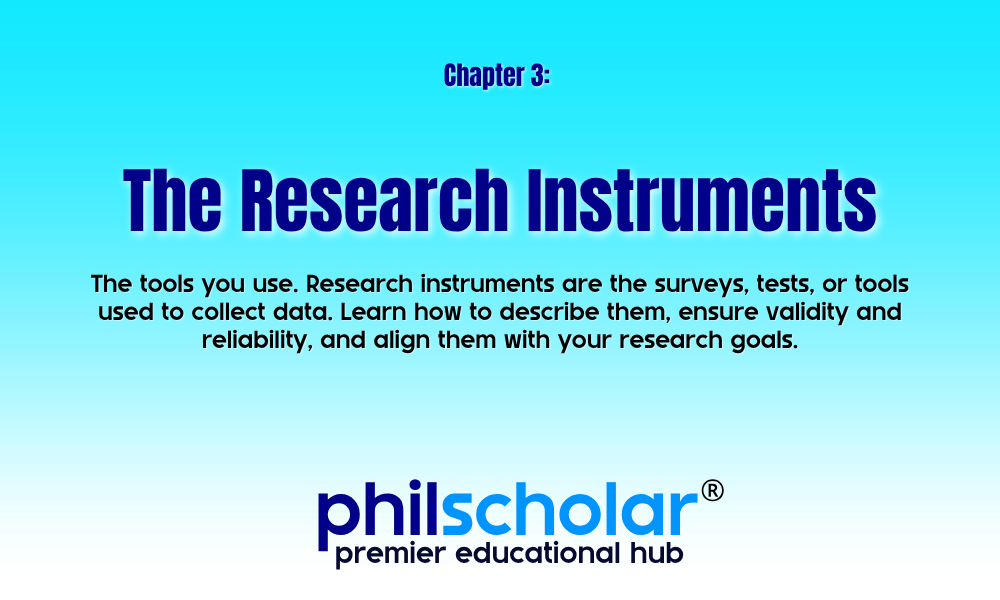Category: Chapter 3: Research Methodology
-
How to Write the Data Analysis?
Not sure how to write the data analysis section of your thesis or research paper? This beginner-friendly guide walks you through simple steps, with examples, tips, and common mistakes to avoid.
-
How to Write the Data Gathering Procedure in Research
Not sure how to write the data gathering procedure in research? This beginner-friendly guide walks you through the exact steps, structure, dos and don’ts, and common mistakes to avoid so your methodology section is clear, ethical, and panel-ready.
-
How to Write Research Instrument
Writing your Research Instrument section? This beginner-friendly guide shows you how to clearly explain the tool you used, how it was developed and validated, and why it fits your study.
-
How to Write the Population and Sampling
Struggling with your research methodology? This step-by-step guide shows you how to write the Population and Sampling section complete with examples, beginner tips, and best practices to make your Chapter 3 clear, credible, and well-structured.
-
How to Write the Research Locale or Setting
Struggling to write the research locale or setting for Chapter 3? This quick guide explains how to describe your study’s location, what details to include, and why it matters with tips, examples, and FAQs for new researchers.
-
How to Write a Research Design
Learn how to write research design step by step. This guide breaks down the key components of a strong research design from choosing your methodology to aligning your tools with your objectives so your study stays clear, valid, and research-ready.
-

Data Analysis Procedures
Data Analysis Procedures explain how researchers process and examine collected data to generate valid, credible results. This section outlines the steps, methods, and tools used to turn raw data into meaningful findings. Get insights on how to align your analysis with your research goals and produce results that matter.
-

Data Gathering Procedure
Data gathering procedures show exactly how you collect information from your participants. Whether you’re using surveys, interviews, or observations, this section explains the step-by-step process. It helps keep your research clear, ethical, and easy to follow, so others can understand, trust, or even replicate your work.
-

Research Instruments
Research instruments are the actual tools you use to gather data from your participants. Whether it’s a printed questionnaire, an online form, or a checklist, these tools help you collect the right information. Learn how they support your study by making your data collection clear, organized, and aligned with your research goals.
-

Population and Sampling
If you’re working on your first thesis or paper, you’ve probably heard about population and sampling but what are they really for? This guide helps you understand the difference, why they matter, and how they shape your research’s success.
